INTERCALATIONS [para as montanhas, rochas e solos, para os lameiros, matos e vacas,
para os mexilhões do rio, as pessoas e as águas]
solo-show at DuplexAir, Lisbon, PT
07.–28.07.2023
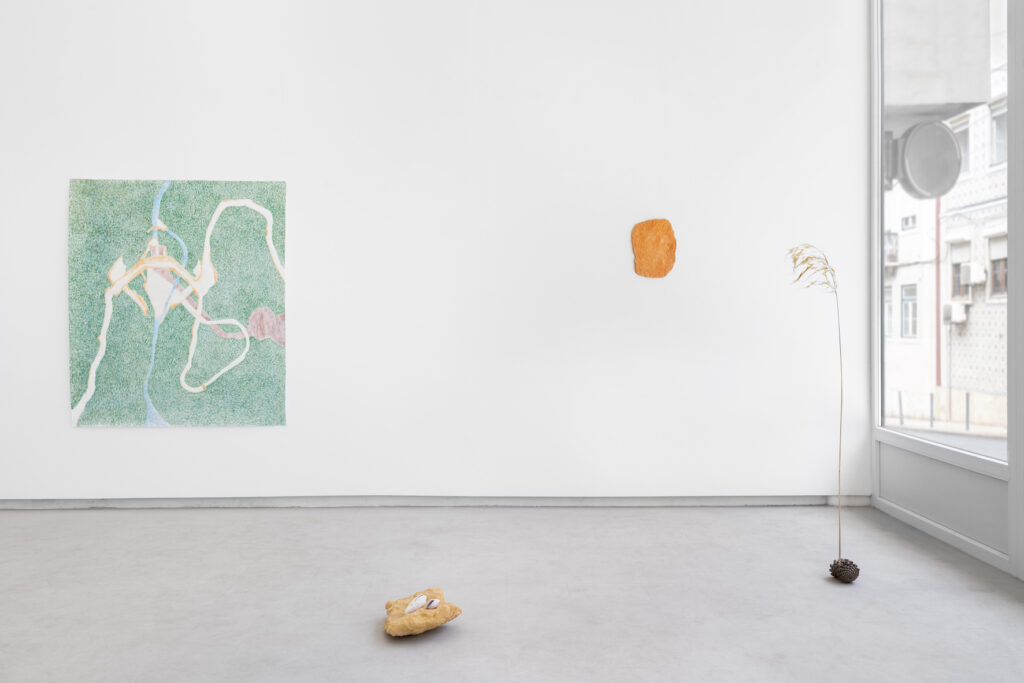
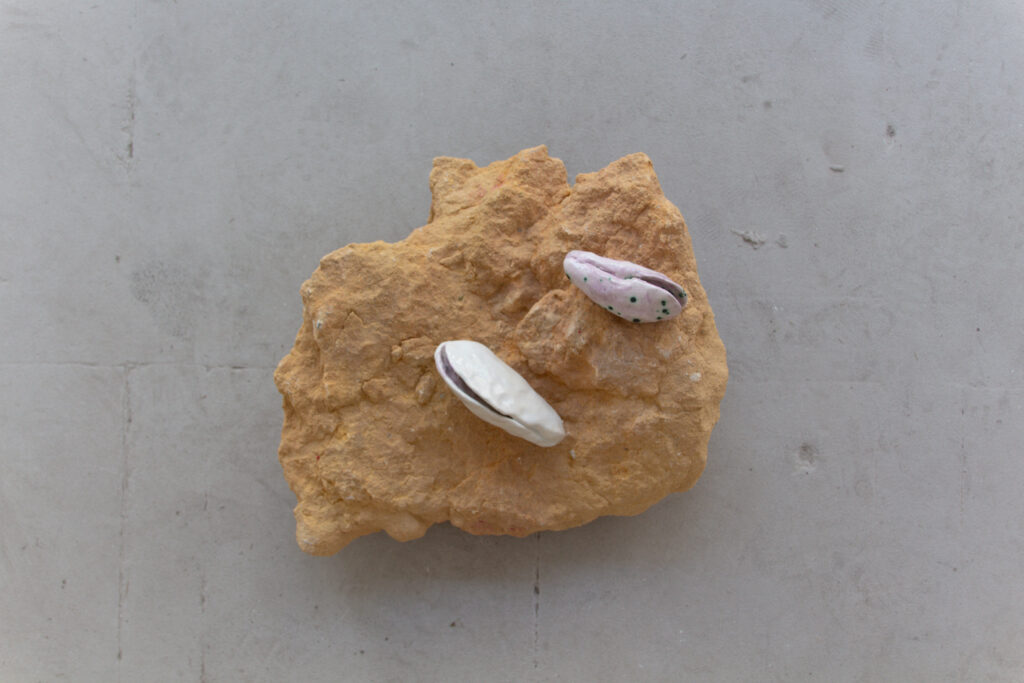
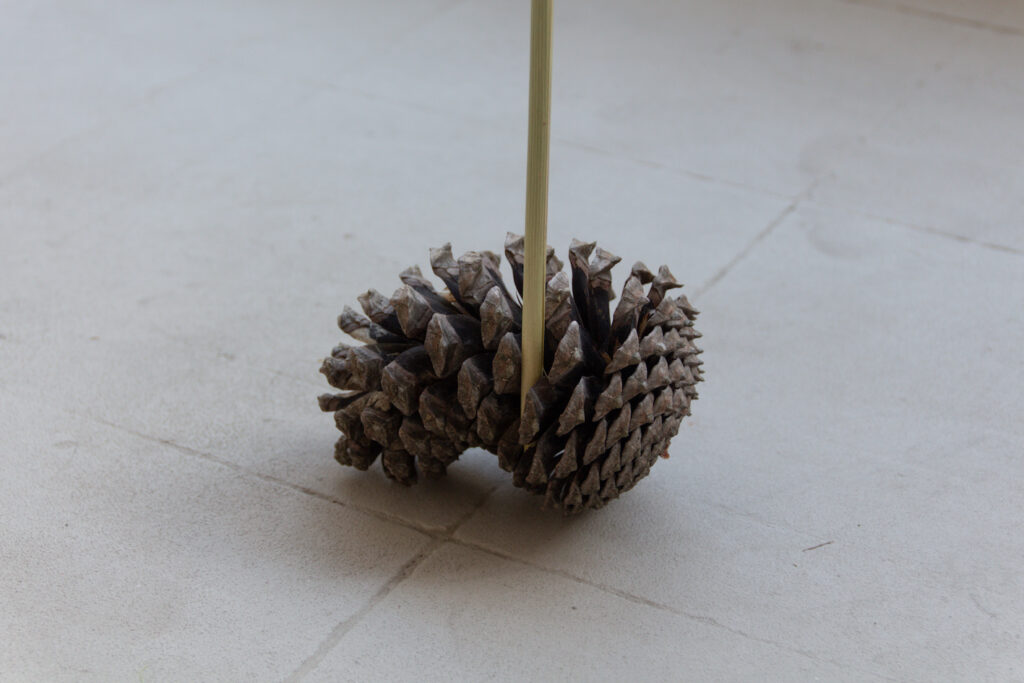
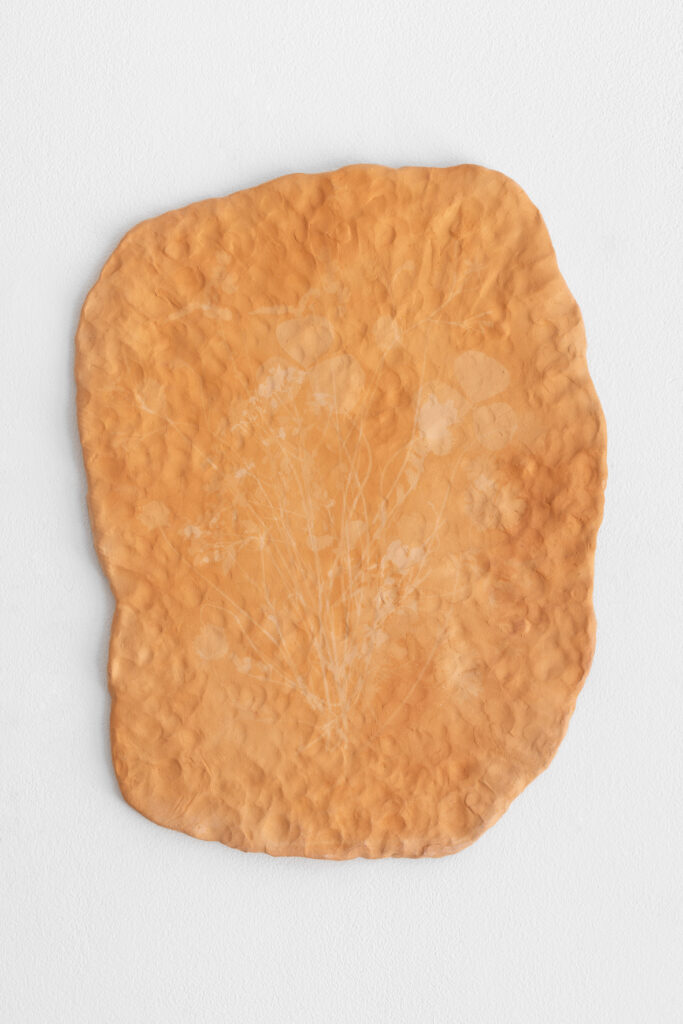
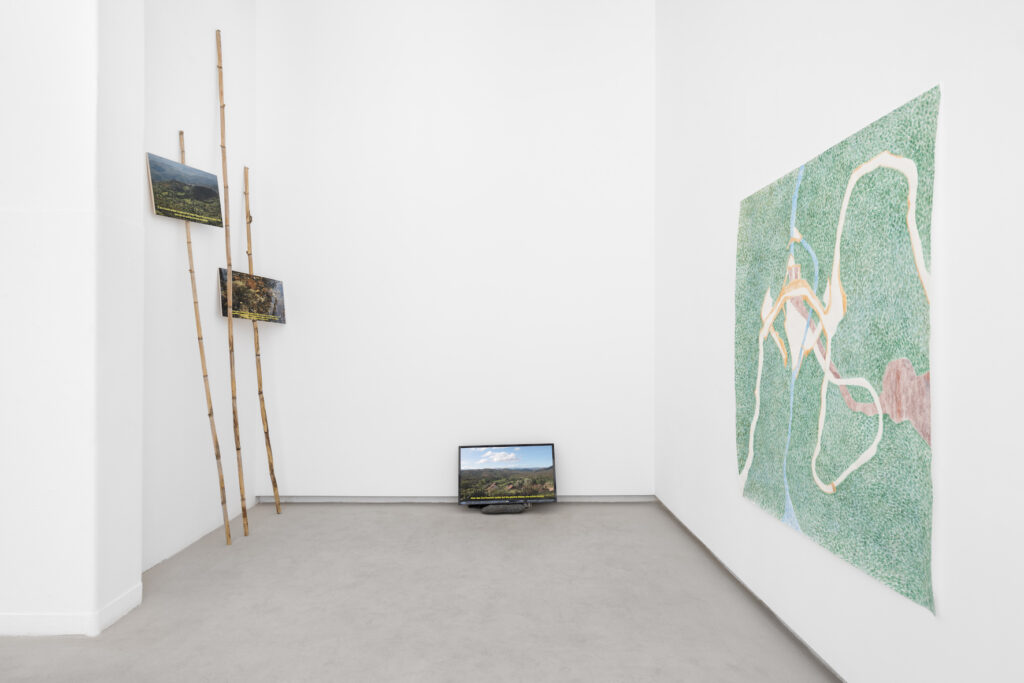
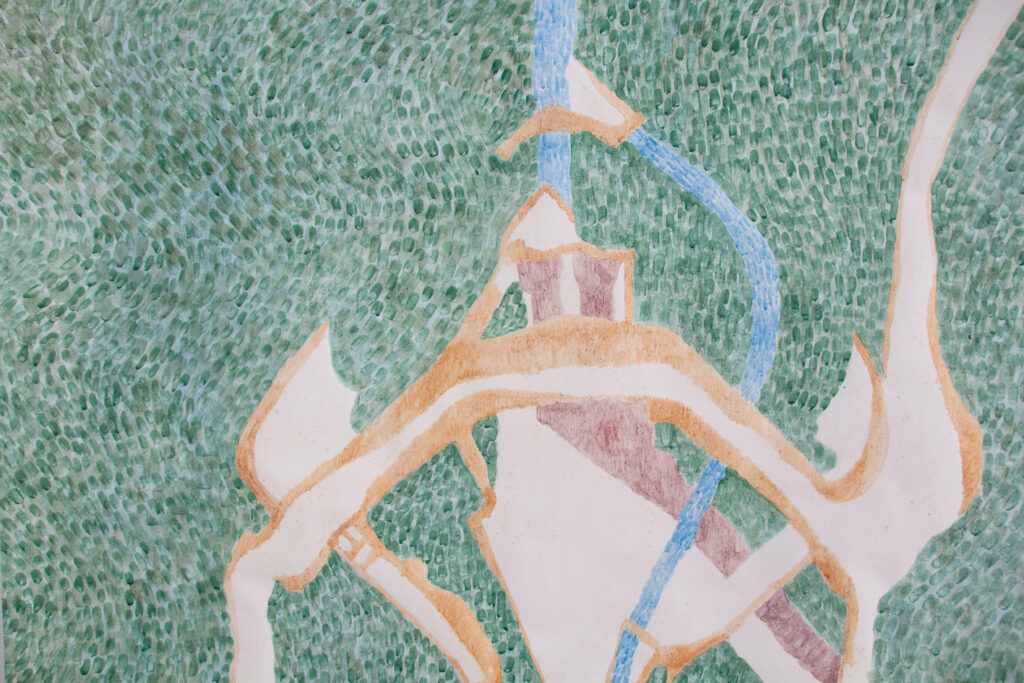
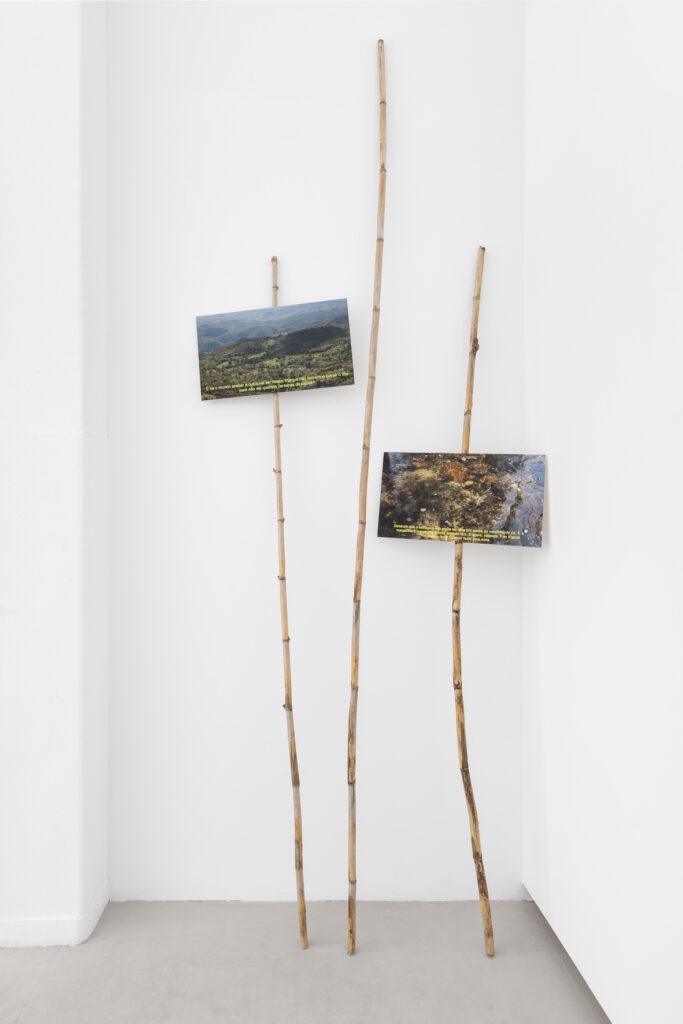
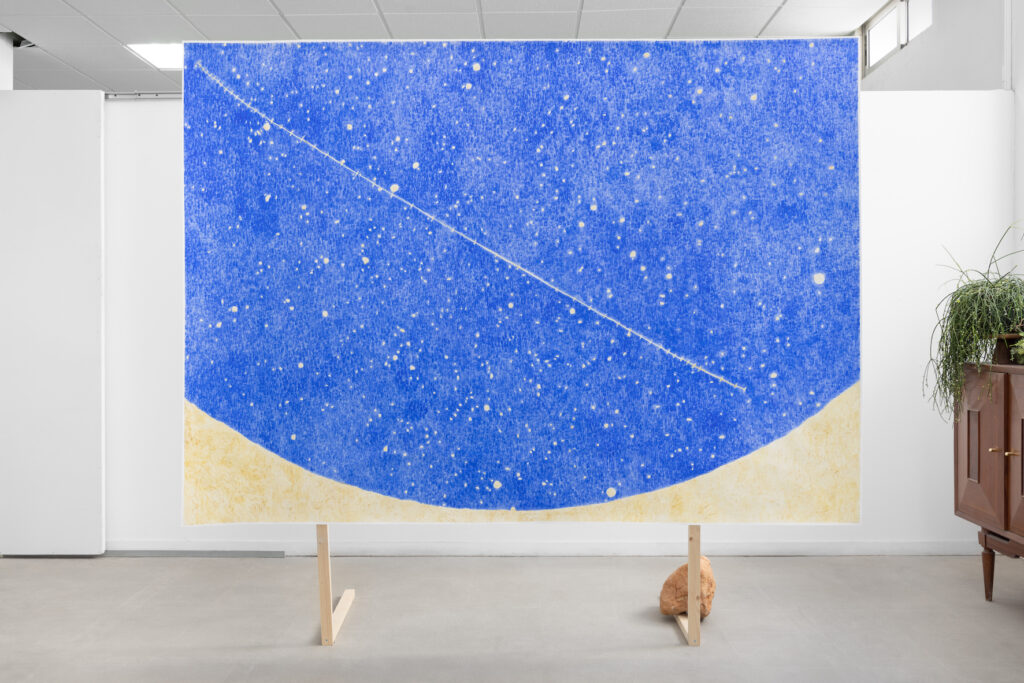

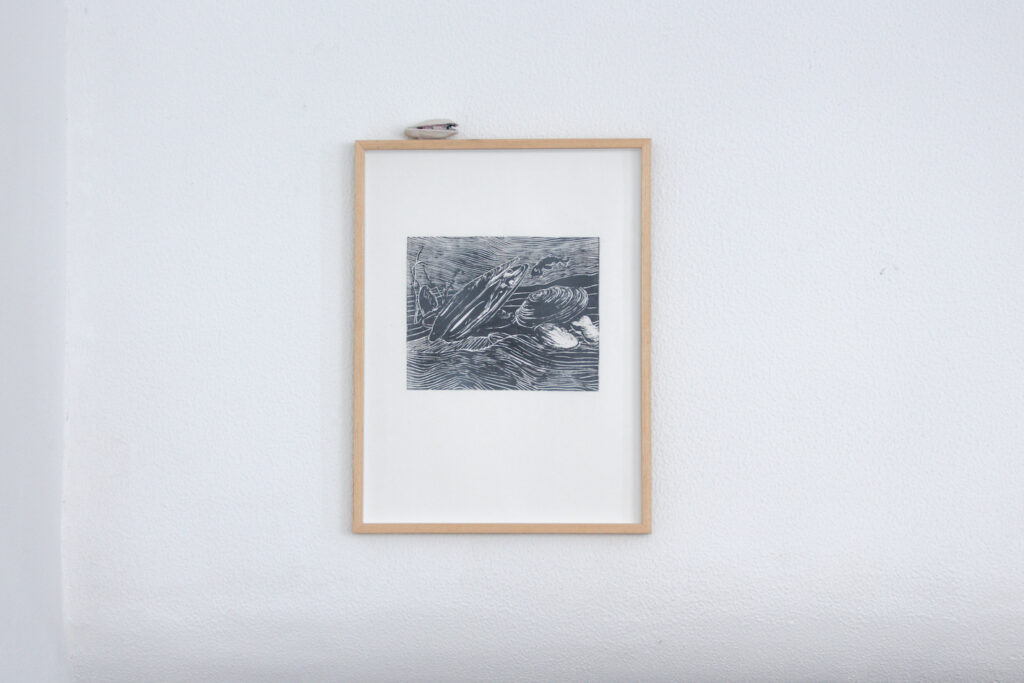
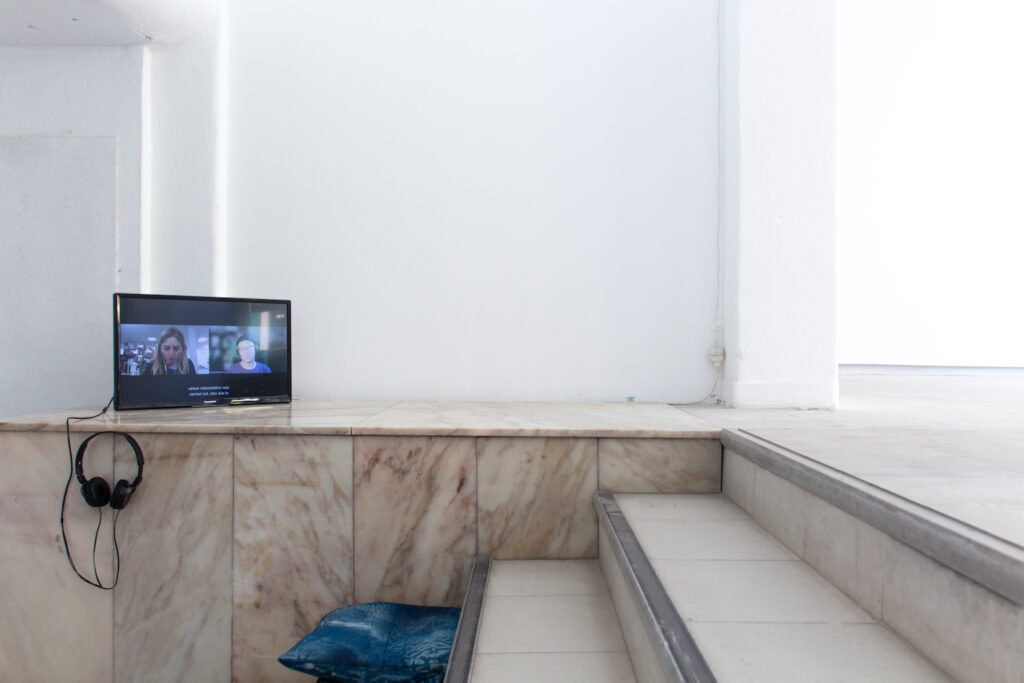

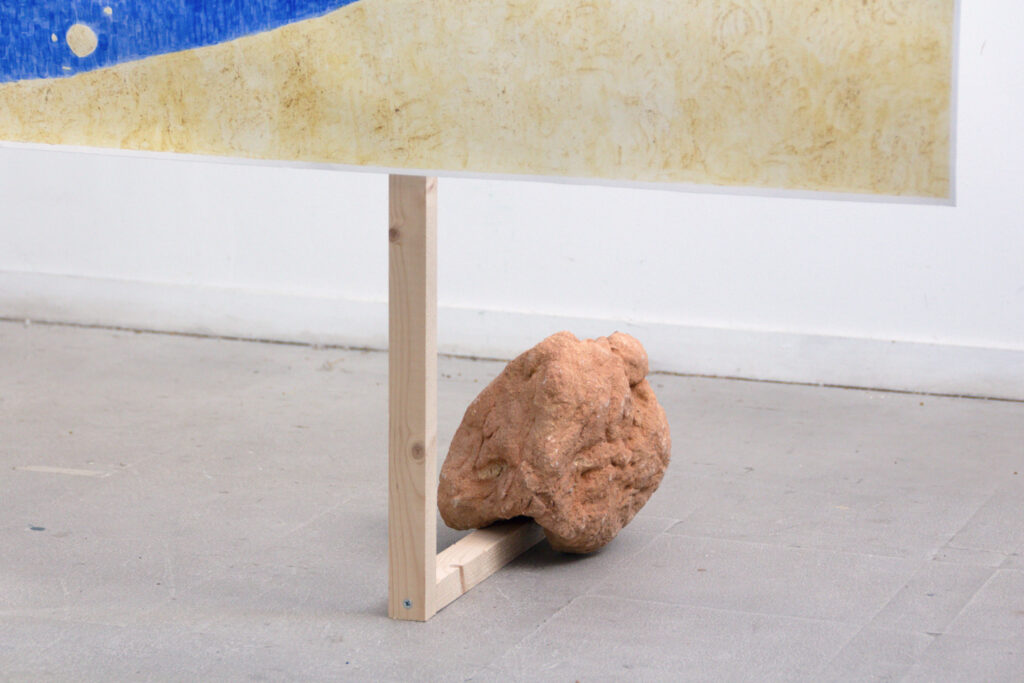
*text in English and Portuguese below*
INTERCALATIONS [para as montanhas, rochas e solos, para os lameiros, matos e vacas, para os mexilhões do rio, as pessoas e as águas]
Den Begriff INTERCALATIONS [lat. intercalare: dazwischen schieben] leiht sich die Künstlerin aus verschiedenen Disziplinen: Er beschreibt geologische Gesteinsschichten, die sich zwischen schon bestehende feste Segmente schieben, beschreibt chemische Prozesse von Lithium-Ionen innerhalb einer Batterie oder aber eine Erzählung, als Einschub in eine große Rahmenhandlung. Wenn etwa die grüne Mobilitätswende als “offiziell” und strategische Rohstoffe als “von großer Wichtigkeit” proklamiert werden, dann mag eine intercalation, eine weitere Schicht, dem lokalen Wissen zu mehr Raum verhelfen.
Auf der Suche nach neuen Visionen für die Zukunft widmet sich die Ausstellung dem Zusammenleben der Menschen im Barroso mit ihrer Mitwelt und jenen Strukturen, die ihre Gemeinschaft in Form der Allmende bis heute prägen. Die Videoinstallation Para o Barroso, para as montanhas, […] bildet das Zentrum: Im Zuhören und Ansehen der Bilder, des Gesangs, der Geräusche und der Stimme von Aida Fernandes aus Covas do Barroso, breiten sich die Charakteristika des Natur-Kultur-Gefüges der Region vor uns aus: Intergenerationales Wissen und Kreislauflandwirtschaft, gemeinschaftliche Brotöfen, eine kollektive Bewirtschaftung der Baldios [Allmende], Bodennutzung frei von Pestiziden und ein traditionelles Bewässerungssystem für eine gerechte Verteilung des Wassers innerhalb der Gemeinschaft. Die Verbindung der Menschen zu den natürlichen Kreisläufen spiegelt sich in der Art und Weise ihres sorgsamen Umgangs mit ihrem landwirtschaftlichen Erbe und in klaren Verteilungsstrukturen all jener Güter wider.
Zugleich treffen unterschiedliche Vorstellungen von nachhaltigem Leben und Visionen für die Zukunft aufeinander: Auf der einen Seite das ressourcenschonende Wirtschaften von den Tälern bis zu den Bergspitzen, auf der anderen Seite das Interesse der politischen Zentren und Entscheidungsführenden, getrieben vom großen Hunger nach dem, was sich in jenen Gesteinsschichten verbirgt: Lithium. Im Interesse an den Bodenschätzen für die Mobilitätswende und diese insbesondere an den Rändern Europas abzubauen, möchte das britische börsennotierte Unternehmen Savannah Resources eine der größten Lithiumminen Europas im Tagebau eröffnen. Ohne langfristigen Einbezug der lokalen Bevölkerung sollen in Covas die gemeinschaftlich genutzten Berge weichen, Wasser entzogen und Erden verödet werden, um nicht zuletzt das Geschäftsmodell großer, schwerer und schneller Fahrzeuge mit hohem Rohstoffbedarf in die Zukunft zu retten.
Deswegen ist es hier Fernandes’ Erzählung, die begleitet von Tieren und Pflanzen, Bergen, Wassern und Steinen, durch den Ausstellungsraum mäandert und sich, wie eine neue Schicht, zwischen die vorherrschenden Proklamationen einer vermeintlich grünen Mobilitätswende schiebt. So wird etwa Margaritifera margaritifera, die Flussperlmuschel, eingeführt, in Anlehnung an eine enzyklopädische Darstellung aus der Zeit vor der Industrialisierung, bis zu der sie vielerorts in europäischen Flüssen verbreitet war. Mit einem Alter von bis zu 270 Jahren spannt sich ihre Erinnerung weit zurück, während sie innerhalb ihres Lebenszyklus ein Jahr in den Kiemen der Bachforelle verbringt, bis sie sich für mehrere Jahre in den Flussgrund gräbt. Erst dann beginnt sie vom Flussbett aus, die Wasser zu filtern und zu reinigen. Wo sie lebt, ist das Wasser besonders rein, jedoch ist ihr Lebensraum prekär geworden, seit Staudämme der Bachforelle, den Weg versperren, seit Reste industrieller Landwirtschaft die Wasser durchspülen und Flussbetten durch menschlichen Eingriff verändert werden. Als Symbol für ein intaktes Natur-Kultur-Gefüge reiht sie sich ein in weitere gesammelte Eindrücke, Assoziationen, Spuren und Materie aus dem Barroso, wenn Fotografien in Form von Demonstrationsplakaten die Berge und Wasser spiegeln, die verblassten Spuren gesammelter Blüten aus dem Explorationsgebiet auf einer Tafel roter, gebrannter Erde erscheinen, wenn ein Staudamm sich in eine Berglandschaft schiebt und ein Stein an jenen Felsen am Berg erinnert, der die gemeinschaftlich organisierte Aufteilung des Wassers kennzeichnet.
Und zuletzt ist es die Malerei Kosmische Biografien, bye, bye bis in 50.000 Jahren, die unseren Blick in die Ferne leitet, auf den grünen Kometen, wie er auf seiner Umlaufbahn im Februar dieses Jahres der Erde so nah kam, wie zuletzt zur Zeit der Neanderthaler. Wir, als kleine Wesen dieses Kosmos, leben nach dem letzten IPCC-Weltklimabericht im globalen Norden nicht nur weit über die planetaren Grenzen hinaus, sondern können unseren Planeten nur lebenswert erhalten, wenn Degrowth und ressourcenschonende Politik Einzug erhält. Die Ausstellung vermag keine Antworten zu liefern, sondern möchte Intercalations einfügen: Erzählungen kosmischer, geologischer und biografischer Natur, die sich begegnen, um den Barroso zu zelebrieren und unsere Vorstellungen für ein nachhaltiges Leben mit Visionen für die Zukunft anzuregen.
Text der Künstlerin
*
English
INTERCALATIONS
[to the mountains, meadows, rocks and soils, the cows, genistas, and people, the fresh water mussels and waters]
I borrow the term INTERCALATIONS [lat. intercalare: to push in between] from various disciplines: it describes geological rock layers that push between already existing solid segments, chemical processes of lithium ions within a battery, or, in a narrative sense, as an insertion into a larger, framed story. For example, when the green mobility transition is declared as “official” and strategic raw materials as “of great importance”, an intercalation – another layer – may give space to local knowledge.
In search of new visions for the future, the exhibition is dedicated to the coexistence of the people of Barroso with their surroundings, as well as to the structures which shape their community in the form of their commons to this day.
The video installation Para o Barroso, para as montanhas, […] thus forms the core of the exhibition: In listening to and watching the images, the singing, the sounds as well as the words of Aida Fernandes from Covas do Barroso, the characteristics of the region’s natureculture entanglements unfold in front of us: Intergenerational knowledge and circular agriculture, communal bread ovens, a collective management of the baldios [the commons], land use free of pesticides and a traditional irrigation system for equitable distribution of water within the community. The connection these people have with the natural cycles is reflected in the way they treat their agricultural heritage with care and in the clear distribution structures of their goods.
At the same time, there is a clash of ideas about sustainable living and visions for the future: on the one hand, there is the resource-conserving economy from the valleys to the mountaintops, on the other hand, there is the interest of political centres and decision-makers, driven by the great hunger for what is hidden in those rock layers: lithium. With the aim of increasing the extractivism of the metals for the mobility transition at Europe’s margins, the UK-listed company Savannah Resources wants to open one of the largest lithium mines in Europe, using open-cast mining. Without the long-term involvement of the local population the mountains in Covas, which are used by the community, are to be eroded, water is to be withdrawn and soils are to be deserted. And all of this not least is to be done in order to maintain the future of a business model dependent on large, heavy and fast cars which have a high demand for raw materials.
Fernandes’ narrative, accompanied by animals and plants, mountains, waters and stones thus meanders through the exhibition space and pushes like a new stratum between the prevailing proclamations of a supposedly green mobility transition. Margaritifera margaritifera, the freshwater pearl mussel, is introduced in reference to an encyclopaedic illustration from before industrialisation began. Until then, it was commonly found in European rivers. With a maximum lifespan of 270 years, its memory stretches further than multiple human generations. During its life cycle, the freshwater mussel spends a year in the gills of the brown trout until it burrows into the river bottom for several years. Only then does the mussel begin to filter and clean the waters from the riverbed. Its habitat of particularly pure water has become precarious; dams now block the way of the brown trout, the effluent of industrial agriculture washes through the water, and riverbeds are altered by human intervention. As a symbol of an intact natureculture system, it links up with other accumulated sensations, associations, traces and matter from the Barroso region, when photographs in the form of protest posters reflect the mountains and water, when the pale traces of collected flowers from the exploration area appear on a panel of red burnt clay, when the construction of a dam intervenes in a vibrant mountain landscape, and when a stone recalls that rock on the mountain that marks the communally organised sharing of the water.
Finally, it is the painting Cosmic Biographies, bye, bye until 50,000 years from now that guides the gaze into the distance to the green comet, as it came so close to Earth on its orbit in February of this year, for the first time since the Neanderthals. According to the latest IPCC world climate report, we, as small beings in this cosmos, not only live far beyond planetary boundaries in the global North, but can only keep our planet livable if degrowth and resource-saving policies take hold. The exhibition does not aim to provide answers, rather, it wants to insert intercalations: narratives of cosmic, geological and biographical nature that meet to celebrate the Barroso region and stimulate our imaginations for sustainable living with visions for the future.
text by Paula König, translation by Felisha Maria Carenage, Natália Grestyová
*
Português
INTERCALATIONS [para as montanhas, rochas e solos, para os lameiros, matos e vacas, para os mexilhões do rio, as pessoas e as águas]
Adoto o termo INTERCALATIONS [lat. intercalare: inserir no meio] de várias disciplinas: descreve camadas de rocha que se inserem entre segmentos de rocha já existentes, os processos químicos de iões de lítio numa bateria, ou a inserção de uma outra narrativa na história já existente. Por exemplo, quando se proclama que a transição para mobilidade verde é “oficial” e que matérias primas estratégicas são “de grande importância”, uma intercalação – outra camada – pode dar lugar ao conhecimento local.
À procura de novas visões para o futuro, a exposição dedica-se à coexistência dos habitantes do Barroso com o seu meio envolvente, bem como às estruturas que moldam a sua comunidade sob a forma dos baldios até aos dias de hoje.
A instalação de vídeo Para o Barroso, para as montanhas, […] constitui então o âmago da exposição: Ao ouvir e ver as imagens, os sons, o cântico e as palavras de Aida Fernandes, de Covas do Barroso, os entrelaçamentos de natureza-cultura da região desdobram-se diante de nós: os conhecimentos transgeracionais e a agricultura circular, os fornos de pão comunitários, a gestão coletiva dos baldios, a utilização da terra sem pesticidas e um sistema de irrigação tradicional para a distribuição equitativa da água na comunidade. A ligação destas comunidades aos ciclos naturais reflecte-se na forma como tratam com cuidado o seu património agrícola e nas estruturas claras de distribuição dos seus bens.
Ao mesmo tempo, chocam diferentes ideias de vida sustentável e visões de futuro: por um lado, a economia de conservação dos recursos, dos vales aos picos das montanhas, por outro, o interesse dos centros políticos e dos decisores, movidos pela grande fome do que se esconde por baixo dessas camadas de rocha: o lítio. Com o objetivo de explorar os recursos minerais para a transição de mobilidade nas periferias da Europa, a empresa britânica Savannah Resources quer abrir uma das maiores minas de lítio da Europa, utilizando mineração a céu aberto. Sem o envolvimento a longo prazo da população local, as montanhas de Covas, que são utilizadas pela comunidade, irão ser desbravadas, a água será retirada e os solos serão destruídos. E tudo isto sobretudo para manter o futuro de um modelo económico dependente de carros grandes, pesados e rápidos, que exigem grandes quantidades de matérias-primas.
Assim, a narrativa de Fernandes, acompanhada por animais e plantas, montanhas, águas e pedras, serpenteia pelo espaço expositivo e insere-se, como uma nova camada, entre as proclamações dominantes de uma suposta transição para a mobilidade verde. Margaritifera margaritifera, o mexilhão pérola do rio, é apresentado em referência a uma ilustração enciclopédica anterior à industrialização. Até aí, era comum encontrá-lo nos rios da Europa. Com uma esperança de vida que pode chegar aos 270 anos, a sua memória é longa e ultrapassa várias gerações humanas. No seu ciclo de vida, o mexilhão do rio passa um ano nas guelras da truta-castanha até se enterrar no fundo do rio durante vários anos. Só então começa a filtrar e a limpar as águas do leito do rio. No local onde vive, a água é particularmente pura, mas o seu habitat tornou-se precário, uma vez que atualmente as barragens bloqueiam o caminho da truta-castanha, os restos da agricultura industrial são arrastados para a água e os leitos dos rios são alterados pela intervenção humana. Atualmente, o seu habitat de águas particularmente puras tornou-se precário, uma vez que as barragens bloqueiam o caminho da truta-castanha, os restos da agricultura industrial são arrastados para as águas e os leitos dos rios são alterados pela intervenção humana. Como símbolo de um sistema de natureza-cultura intacto, este junta-se a outras sensações, associações, vestígios e matérias da região do Barroso, enquanto as fotografias refletem a serra e a água sob a forma de cartazes de protesto, enquanto os vestígios esbatidos das flores recolhidas na área de exploração aparecem num painel de barro vermelho queimado, enquanto a construção de uma barragem intervém numa paisagem montanhosa vibrante, e uma pedra recorda o rochedo da serra que marca a partilha comunitária da água.
E, por fim, é a pintura Cosmic Biographies, bye, bye until 50,000 years from now, que guia o nosso olhar para a distância do cometa verde, que passou tão próximo da Terra na sua órbita, em fevereiro deste ano, pela primeira vez desde os Neandertais. De acordo com o último relatório do IPCC sobre o clima mundial, nós, como pequenos seres deste cosmos, não só vivemos muito além dos limites planetários no Norte global, como só podemos manter o nosso planeta habitável se forem adotadas políticas de decrescimento e de poupança de recursos. A exposição não tem como objetivo dar respostas, mas sim inserir intercalações: narrativas de natureza cósmica, geológica e biográfica que se encontram para celebrar a região do Barroso e estimular a nossa imaginação para uma vida sustentável com visões para o futuro.
Texto de Paula König, tradução de Salomé Lopes e Nadia Marques
*
Fotos by Bruno Lopes and the artist.
Special thanks to Michael Reckordt from PowerShift e.V.!